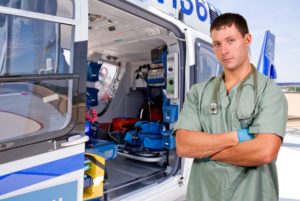As a travel nurse, you can elevate your career to the next level and get away from the humdrum of everyday life. The opportunities, experiences, and adventures available through this enriching career are limitless and can be found nowhere else.
After all, what other careers allow you to explore the country and get paid to do it?
Unfortunately, procedures and policies had to be adjusted when the world found itself amid the COVID-19 pandemic. There is no question that the pandemic caused a record demand for travel nurses across the country. As a result of this uptick in need, the medical landscape has changed dramatically from what it once was. As we continue to navigate the varying chapters of COVID-19 (from Delta to Omicron), there have been a few noticeable changes between travel nursing before the pandemic and where we are now.
More Competitive Compensation
Traditionally, the salary for travel nurse assignments is almost always higher than the salary for permanent nursing staff. During the initial surges of COVID-19 cases, healthcare facilities desperately needed nurses to support their short-handed staff in treating as many COVID-19 patients as possible. The length of the assignment could vary, but the compensation was significantly increased.
Also known as crisis pay or rapid response travel nursing, the compensation was usually more than traditional travel assignments. Healthcare facilities doubled the salary to entice travel nurses to help with the influx of patients in areas where cases were extremely high. Even though the number of cases today has decreased significantly, the salary for travel nurses is still higher than before the pandemic.
PPE and Increased Hours
Due to so many facilities being short-staffed, the nurses and travelers had to take on longer hours and more patients to make sure everyone was covered. Many had to go through 12+ hour shifts to get the job done, and some are still functioning this way now. A part of this big change is being flexible with schedules and the willingness to float when needed.
In addition to the 12+ hour shifts, PPE has become vital. Mandatory masking and other similar measures have gone into place in various states to help reduce spread as nurses move from one location to the next. Supplies and equipment for patients and protective gear for healthcare workers are not as scarce as they were early on in the pandemic, but sporadic shortages still exist, especially in some rural areas. More measures have been taken to supply facilities with ample PPE, and hospitals are planning for unexpected surges of patients (in case of a new outbreak).
Improved Support For Healthcare Workers
The dark side of the pandemic that no one wants to talk about is its effect on healthcare workers. With thousands of patients in critical condition from COVID-19, the physical and mental toll it takes can be adverse and go beyond the typical feeling of burnout. Overstretched staff cannot give patients the attention they typically receive under normal conditions, whether in the emergency room, intensive care, or the COVID-19 areas set up in portions of hospitals.
Now, facilities and travel nursing agencies alike have invested in more resources to support travel nurses and conduct mental health check-ins for staff on the brink of burnout and exhaustion. Support systems and counseling are more readily available to prevent feelings of hopelessness and despair. Nurse First makes it a mission to always know how our nurses are feeling and if we can do anything to make them feel more comfortable. Our nurses are our family, so we want to treat them as such.
Although the pandemic has changed some procedures and added more precautions, travel nursing is still an opportune chance to gain knowledge and experiences. If you want to start your career in travel nursing, visit our website to learn more! Check out our job board for available travel nurse jobs in the top travel nurse locations!


